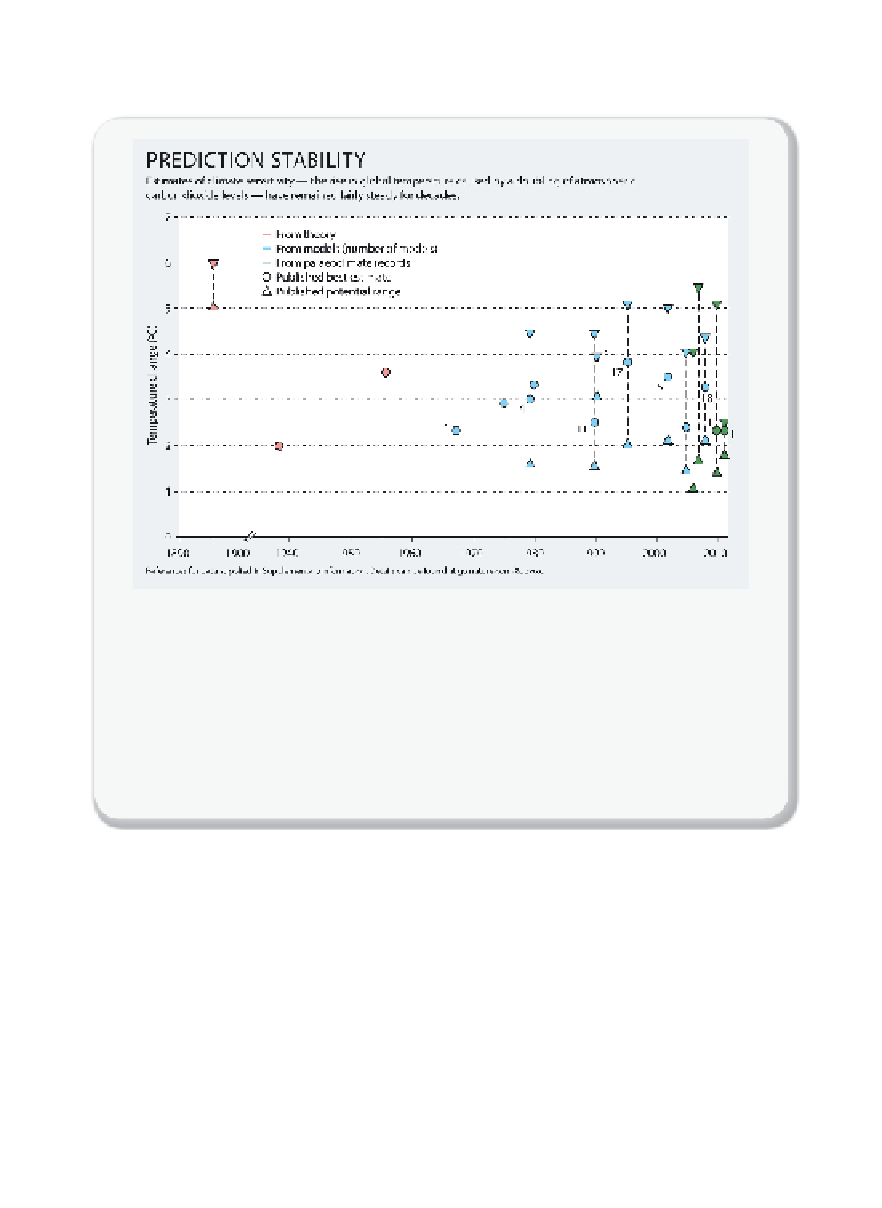Environmental Engineering Reference
In-Depth Information
Figure 2.5.12
Evolution of the accuracy of climate predictions
Evolution of the estimates of the change in average temperature of the earth if the CO
2
concentration is doubled (see Maslin and Austin [2.18] for details). Note the 1886 predic-
tion derives from Svante Arrhenius' landmark 1886 work [2.19]. The remarkable feature
of this fi gure is not the constancy of the predicted effect of CO
2
doubling. Rather, it is
that despite an impressive increase in the complexity and details of the climate models,
the uncertainty in the predictions has not decreased.
Figure from Maslin et al.
[2.18 ],
with permission from Macmillan Publishers.
element to these models also requires more input parameters, resulting
in new uncertainties. For example, if we describe the earth with a 500 km
grid size, the interaction of the atmosphere with the surface of the earth
or ocean will be lumped in effective parameters. In practice one can
develop many different ways in which one lumps these parameters, and
experimental data are used to calibrate these lumping schemes. If we
now reduce the grid size to 50 km, we have a resolution in which we
distinguish mountains, lakes, forests etc. and each has very different
interactions with the atmosphere; instead of one lumped parameter, we
have to incorporate all these interactions. These new insights often reveal
the hidden uncertainties in the previous models. Similarly, a new genera-
tion of models might include, say, a feedback mechanism from the








Search WWH ::

Custom Search